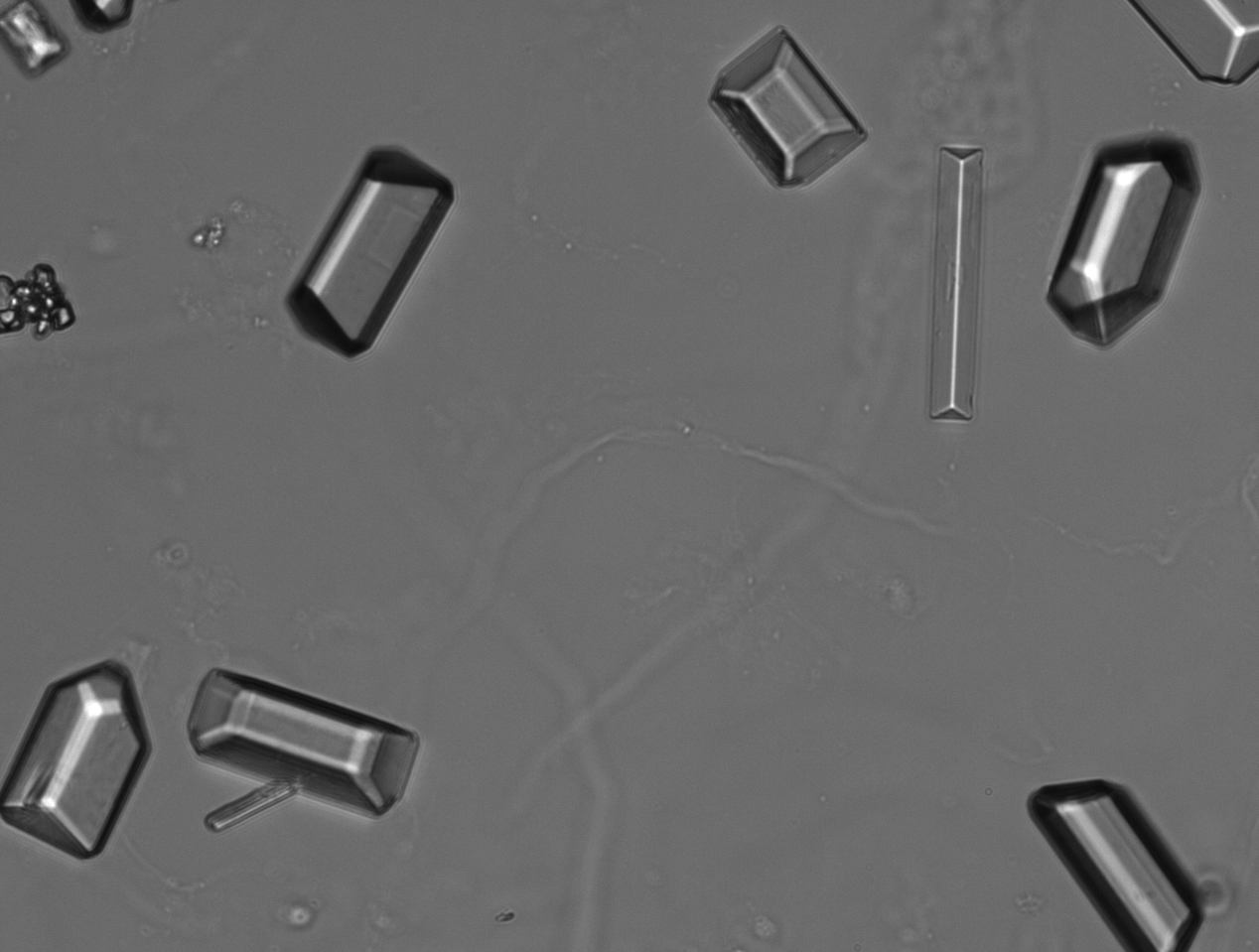NEWS DETAIL
Seek the TRUTH of Life
Many faces of Urine Crytals
Urine contains a large number of different chemicals. Some salts crystalize. This is called crystal. There are many types of urine crystals. Urine crystals can be indicators of a more serious underlying condition.
Uric acid
Uric acid crystals can be different types of shapes: barrel, plate-like, or diamond. They’re typically orange-brown or yellow in color. They can be found in normal urine when caused by a protein-rich diet, which increases uric acid in the urine, gout or kidney stones.
Calcium oxalate
Calcium oxalate crystals are shaped like dumbbells or envelopes. They’re colorless and can be found in healthy urine. Calcium oxalate crystals are heavily associated with kidney stones.
Hippuric
Hippuric acid crystals are rare. They may be either yellow-brown or clear, and they often resemble needle-like prisms or plates. Hippuric acid crystals are often found clustered together. They are sometimes caused by an acidic urine pH, hippuric acid crystals can also occur in healthy urine.
Magnesium ammonium phosphate (struvite)
Magnesium ammonium phosphate crystals are often colorless, rectangular prisms. They can be found in healthy urine, but they typically coincide with a urinary tract infection (UTI).
Calcium carbonate
Calcium carbonate crystals are large, round discs with smooth surfaces. They’re often a light brown color. Crystals of calcium carbonate, which is a supplement you can take to get more calcium are also frequently associated with kidney stones.
Bilirubin
Bilirubin is made when the healthy destruction of red blood cells occurs. It’s passed through the liver. Bilirubin crystals have a needle-like, granular appearance and are often very small and yellow in color. High levels of bilirubin or bilirubin crystals in your urine could indicate liver disease or poor liver function.
Calcium phosphate
Calcium phosphate crystals are colorless and may appear as star-like or needle-like, though they may also form plates. They may show up alone or in clusters. They often appear in alkaline urine, though they can be found in normal urine. In rare cases, calcium phosphate crystals could by caused by hypoparathyroidism.
Ammonium biurate
These crystals are brown spheres with spiky thorns. They almost resemble small bugs. They’re often found in alkaline urine, but they can also be seen in normal urine. Sometimes ammonium biurate crystals only appear because the urine sample is old or has been poorly preserved.
Cholesterol
Cholesterol crystals are often clear and shaped like long rectangles, with a notch cut out at the corner. They’re most likely to appear after a urine sample has been refrigerated. They may be caused by renal tubular disease, which can lead to renal failure if left untreated.
Cystine
Cystine is an amino acid, and it can cause urine crystals and kidney stones. Kidney stones caused by cystine acid are typically larger than most other kidney stones. It’s a rare condition, and often genetic.
Leucine
These crystals are yellow-brown discs with concentric rings like a tree trunk. They’re found in acidic urine. They’re usually a symptom of severe liver disease.
Tyrosine
Tyrosine crystals are colorless and needle-like. They’re often found in acidic urine, and they may be caused by metabolic disorders like liver disease or tyrosinemia.
Indinavir
Indinavir is a medication used to treat HIV. It can cause the formation of crystals in the urine. Indinavir crystals may resemble starbursts, rectangular plates, or fans.
The lab technician will finally examine the sample under a microscope, where they can actually see the crystals if any have formed. Cobio Automated urine sediment analyzer series offers the state of the art automated urine sediment analysis where the lab technician will be able to capture images and view them to identify various crystals present in the urine.
